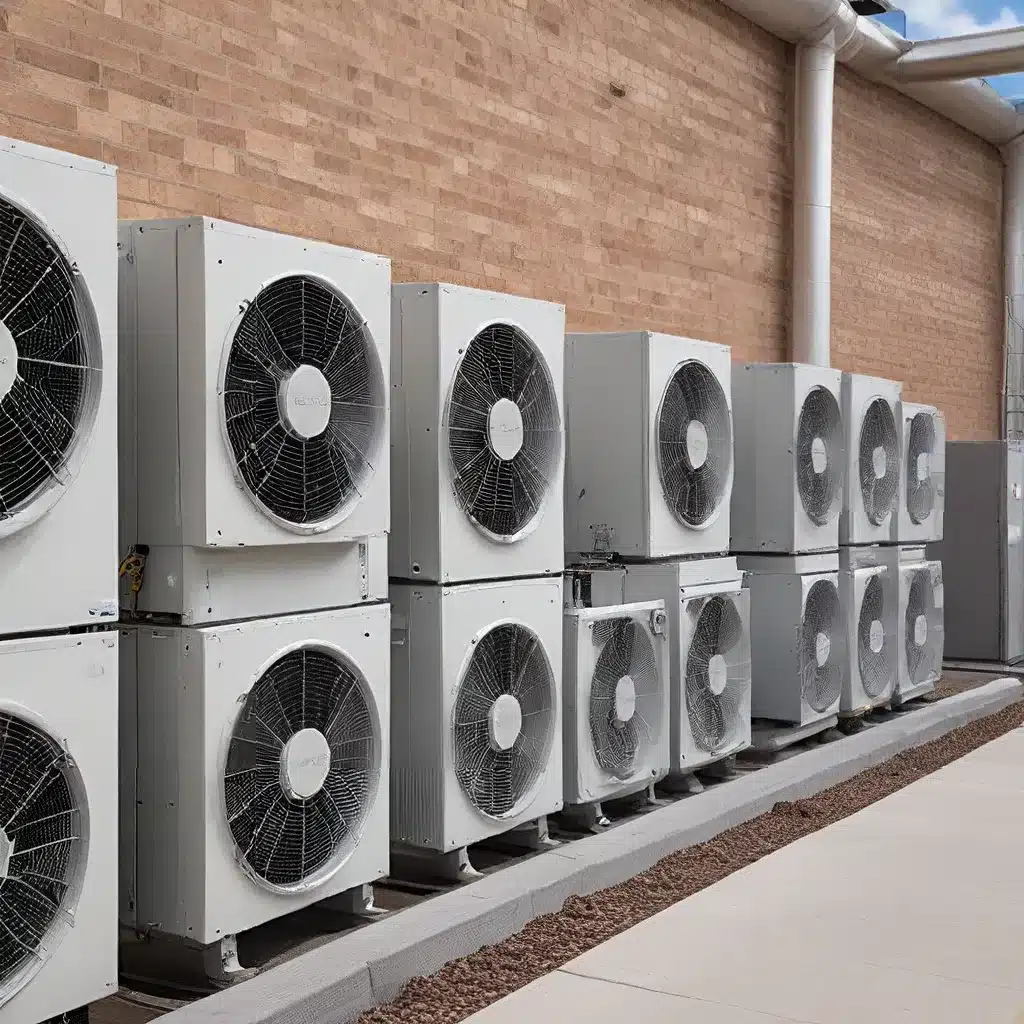
As someone who’s always been fascinated by the intersection of technology and sustainability, I’ve been closely following the exciting advancements happening in the world of heating, ventilation, and air conditioning (HVAC) systems. It’s amazing to see how far the industry has come in its quest to make our buildings more energy-efficient and environmentally friendly.
Breakthrough Technologies Paving the Way
One of the most exciting developments in this space is the U.S. Department of Energy’s (DOE) Building Technologies Office (BTO). The BTO recently announced nearly $83 million in funding for 44 projects that aim to lower Americans’ energy bills by investing in new energy-efficient building technologies, construction practices, and the buildings-sector workforce.
Within this initiative, the BTO has identified several key focus areas, including Advancing Innovative Manufacturing and End-of-Life Processing of Efficient Building Energy Technologies, Thermal Storage Research, Development, and Field Validation, and Heating, Ventilation, and Air Conditioning Research, Development, and Field Validation. These areas are ripe with innovative solutions that hold the potential to revolutionize the way we heat, cool, and power our built environments.
Transforming HVAC: From Efficiency to Sustainability
One of the most intriguing developments in the HVAC space is the focus on integrated systems. Instead of traditional siloed approaches, the industry is now exploring ways to seamlessly integrate HVAC, refrigeration, and water heating technologies. This holistic approach not only enhances energy efficiency but also opens up new possibilities for renewable energy integration and demand-side management.
For example, some of the BTO-funded projects are exploring advanced heat pump technologies that can simultaneously provide heating, cooling, and water heating, all while minimizing energy consumption. Imagine a system that can heat your home, cool your office, and supply hot water for your daily needs – all with a fraction of the energy used by conventional systems. This kind of innovation is truly game-changing.
The Future of HVAC: Intelligent, Adaptable, and Sustainable
But the advancements don’t stop there. The industry is also making strides in sensor-driven automation and data-driven optimization. Imagine an HVAC system that can learn your preferences, monitor environmental conditions, and automatically adjust its operation to maintain optimal comfort while minimizing energy use. This kind of intelligent, adaptive HVAC technology is already being deployed in commercial buildings, and the potential for even greater efficiency and sustainability is on the horizon.
But perhaps the most exciting aspect of these HVAC innovations is the way they’re paving the way for a more sustainable future. By reducing energy consumption and leveraging renewable energy sources, these technologies can help us achieve deeper cuts in greenhouse gas emissions and make significant strides towards a carbon-neutral built environment.
Overcoming Barriers and Driving Adoption
Of course, with any technological revolution, there are always hurdles to overcome. One of the key challenges is ensuring that these advanced HVAC systems are not only highly efficient but also cost-effective and accessible to a wide range of building owners and occupants.
Firewinder is committed to helping bridge this gap by providing innovative, energy-efficient HVAC solutions that deliver outstanding performance and long-term value. By partnering with leading manufacturers and leveraging the latest research from the DOE and other industry leaders, we’re helping to drive the adoption of these transformative technologies.
Embracing the Future of HVAC
As I look to the future, I can’t help but feel a sense of excitement and optimism. The innovations in HVAC technologies that are currently unfolding have the potential to transform the way we design, construct, and operate our buildings – and in doing so, contribute to a more sustainable, energy-efficient, and climate-resilient future.
Of course, there’s still a lot of work to be done, and the path ahead is sure to be filled with challenges and uncertainties. But with the dedicated efforts of organizations like the DOE’s BTO, the ingenuity of HVAC manufacturers and researchers, and the support of forward-thinking companies like Firewinder, I’m confident that we can overcome these obstacles and realize the full potential of these remarkable innovations.
So, if you’re as passionate about sustainable building technologies as I am, I encourage you to stay informed, get involved, and be a part of this exciting journey. The future of HVAC is bright, and we all have a role to play in shaping it.

